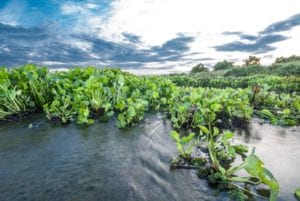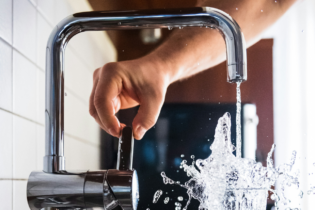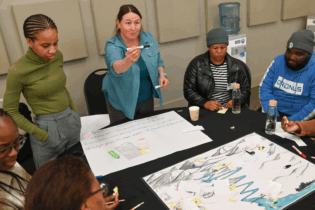The 95-year-old Hartbeespoort Dam has been plagued by water hyacinths since the 1970s. However, there may be a way to harness these alien invaders to empower local communities and start a circular economy.
The water quality in the Hartbeespoort Dam began to decline noticeably in the 1960s as the population in South Africa’s largest metropole began to boom. Today, the effluent from 11 wastewater treatment plants feeds into the dam via a number of rivers, often carrying a high phosphate and sediment load. Although the legal limit for phosphate in effluent is 1 mg/ℓ, this is often exceeded, resulting in eutrophication. More concerning, Frederick Botha, technical advisor, Hartbeespoort Rehabilitation Steering Committee (HRSC), states that research shows that only 47% of the effluent in the dam comes from these treatment plants, while the remaining 53% comes from non-point sources; essentially contaminated effluent from surrounding agriculture, informal settlements, and other anthropogenic activities. Botha goes so far as to refer to Hartbeespoort Dam as Gauteng’s biggest sewage canal, comparing it to a maturation pond. As a result of the inflow of effluent, the water quality in the dam began deteriorating from eutrophic to hypertrophic in 1960. These high phosphate levels feed water hyacinth and, in 1977, the dam was invaded by these alien plants (originating from South America), which covered 70% of the dam’s 2 000 ha surface area.At the time, the Department of Water Affairs took action, spraying the hyacinths with herbicides, resulting in roughly 400 000 tonnes of plant matter sinking to the bottom of the dam. However, over time, this posed a new problem: the plants began to anaerobically digest, releasing biomass nutrients into the water. The result was an explosion of cyanobacteria, which had never been prevalent in Hartbeespoort Dam prior to this.
During the 1980s, the cyanobacteria caused a number of Blue Green Algae bloom incidents and, in March 2003, an emergency was declared when the algae formed a hyper scum, covering a large portion of the dam surface. When the cyanobacteria begin to fight for oxygen, they release a cyanotoxin to kill each other. This toxin is not removed by most water treatment plants and can attack the liver. Botha describes it as the biggest problem for drinking water safety on Hartbeespoort Dam.







